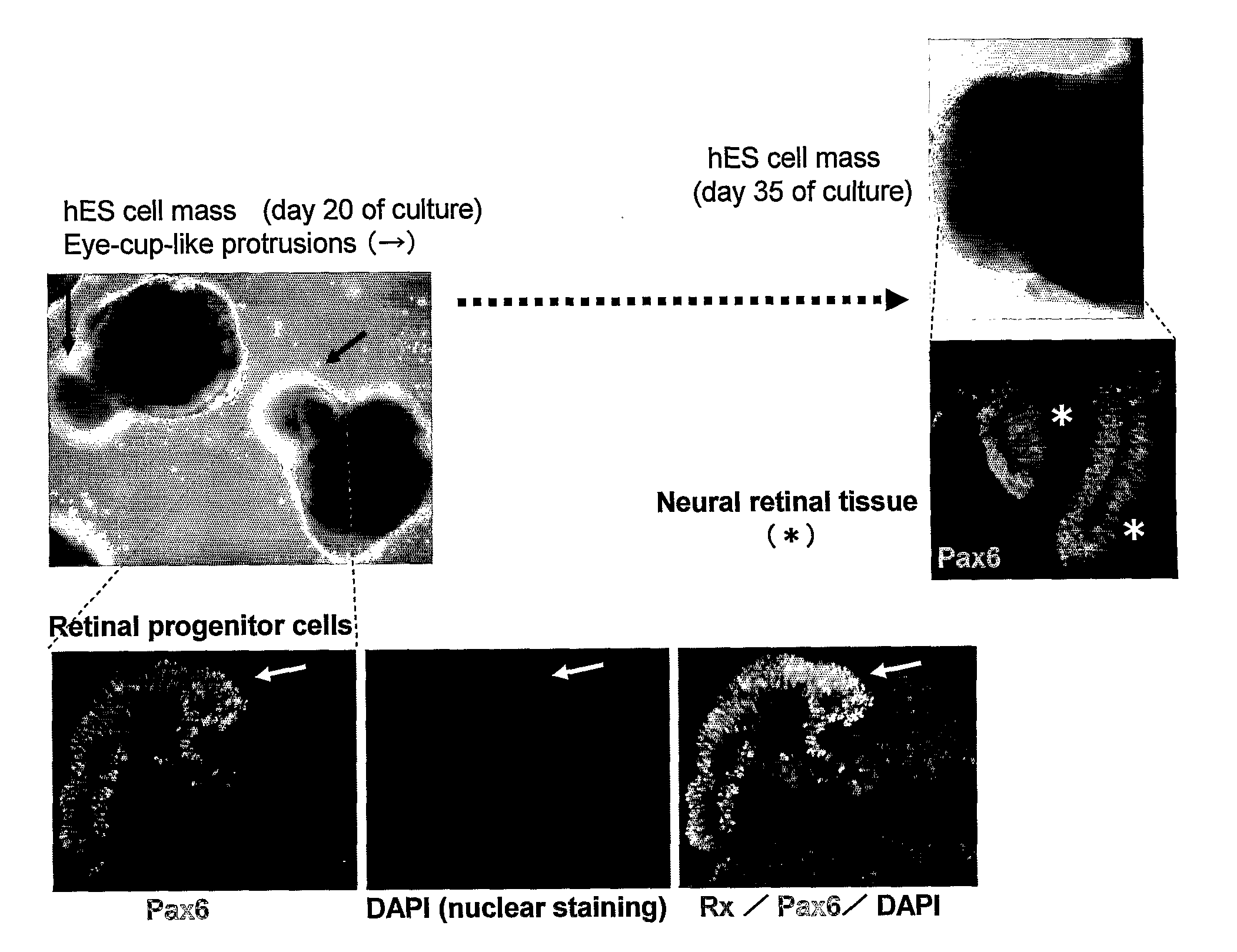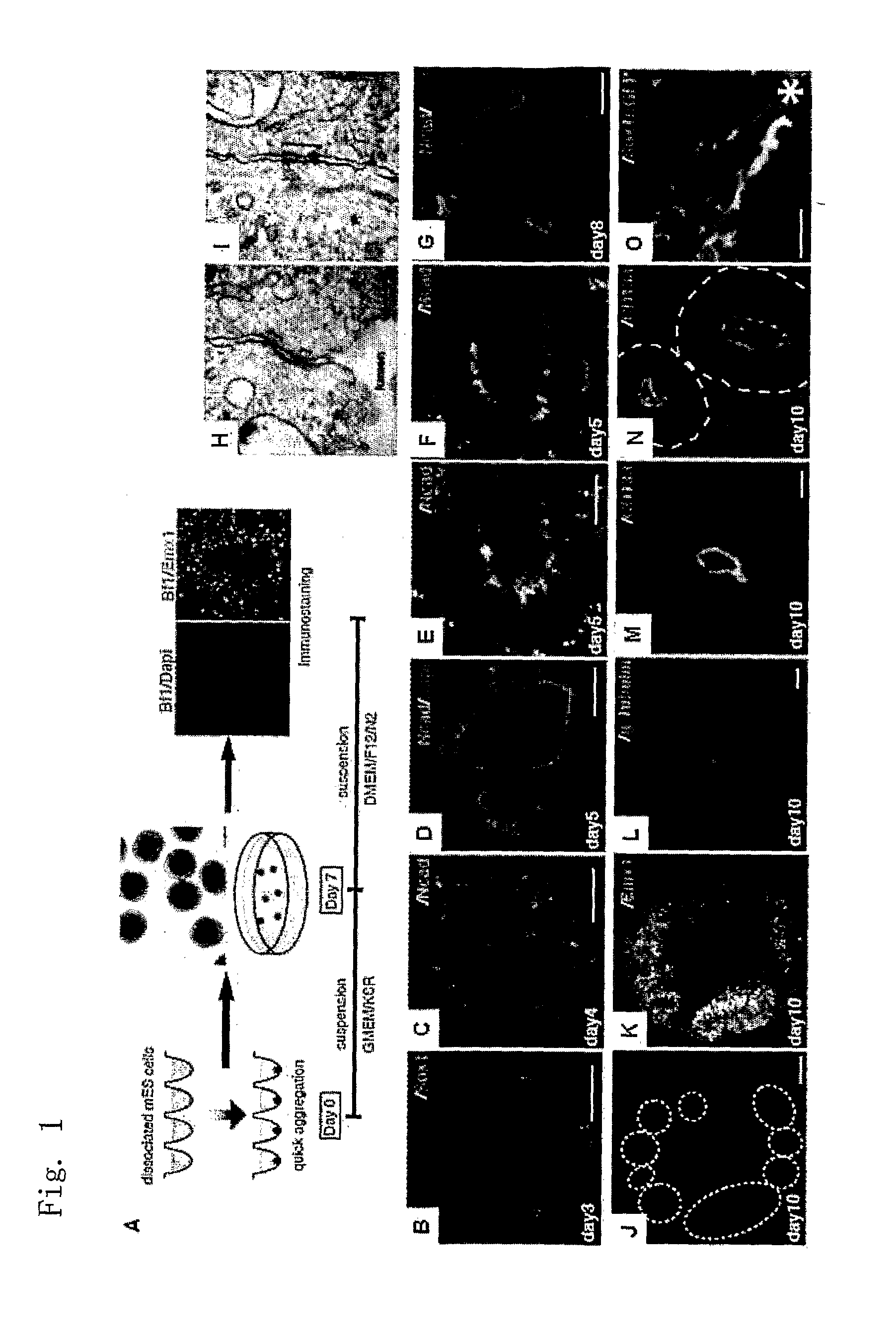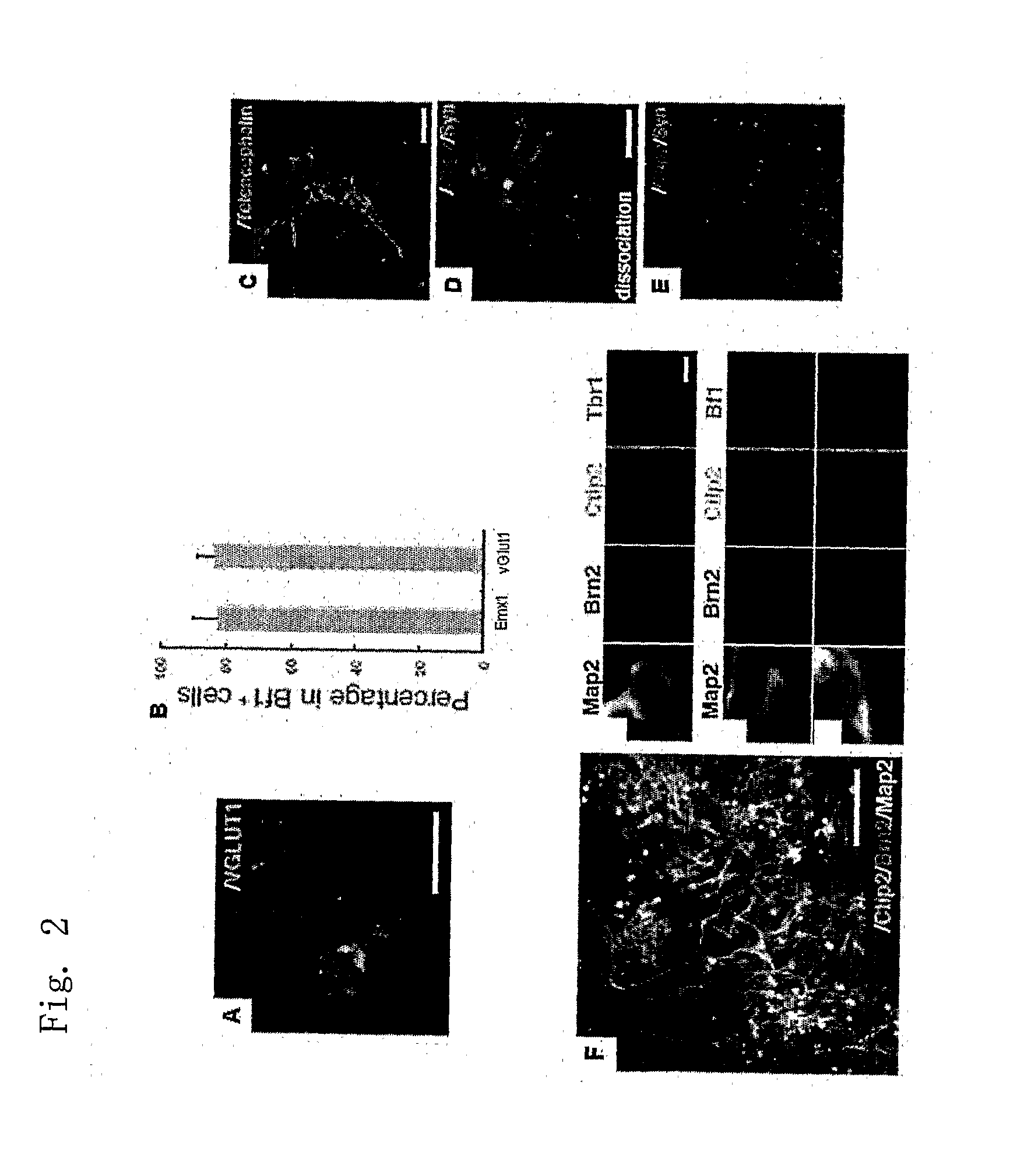Method for differentiation induction in cultured stem cells
a stem cell and differentiation induction technology, applied in the field of stem cell differentiation induction, can solve the problems of insufficient in vitro differentiation, cell and tissue damage, and extremely difficult to obtain human retinal tissue for such research, and achieve selectively inducing the differentiation of retinal cells, the effect of promoting cell differentiation and promoting cell proliferation
- Summary
- Abstract
- Description
- Claims
- Application Information
AI Technical Summary
Benefits of technology
Problems solved by technology
Method used
Image
Examples
example
Highly Efficient Differentiation Induction to Retinal Progenitor Cells by the Modified SFEBq Method with High Concentrations of Matrix Components Added and Optimized KSR Concentration
(Method)
[0179]Rx-EGFP mES cells (mouse ES cells having EGFP knocked in at the early retinal progenitor cell marker gene Rx locus; Wataya et al, PNAS, 2008) were treated by the SFEBq method (a 96-well culture plate of low cell-binding ability) to quickly generate a homogenous aggregate at 3000 cells per well, which was cultured for differentiation. The differentiation induction medium used here was G-MEM medium (Invitrogen), 2% KSR, 2 mM glutamine, 0.1 mM non-essential amino acids, 1 mM pyruvic acid and 0.1 mM 2-mercaptoethanol. Starting one day later, Matrigel was added to the medium in a ratio by volume of 1 / 100 to 1 / 25, and the cells were subjected to suspension aggregate culture for 7 days 5% CO2, at 37° C. Subsequently, the cultivation was further continued under the nerve differentiation promoting ...
example 2
Self Formation of Optic Cup-Like Tissue from Retinal Progenitor Cells Using the Modified SFEBq Method
(Method)
[0182]The aggregate of Rx-positive cells obtained in Example 1 was cultured using a culture broth prepared by adding Matrigel in a 1 / 50 volume to 2% KSR medium for 7 days, after which it was transferred to a culture broth prepared by adding an N2 additive to the DMEM / F12 medium, and further suspension-cultured under 5% CO2 / 40% O2 conditions for 3 days.
(Results)
[0183]The strongly Rx-EGFP-positive portion formed a tissue as a protrusion from the cell mass (FIG. 3). Its histological profile was similar to that of the fetal optic cup (an early retinal tissue formed as a protrusion from thediencephalon), representing a structure wherein Rx-positive, Chx10-positive juvenile neural retinal tissue was wrapped by a layer of retinal pigment cells.
example 3
Self Assembly of Retinal Tissue from Retinal Progenitor Cells Using the Modified SFEBq Method
(Method)
[0184]Optic cup-like tissue as obtained in Example 2 (10 days of culture) was separated from the cell mass using microtweezers, and subjected to suspension culture with DMEM / F12 / N2+0.5 μM retinoic acid (known to promote the survival of photoreceptor cells).
(Results)
[0185]The suspension-cultured optic cup-like tissue had been induced to a laminar structure that is structurally extremely similar to the retina after birth (FIGS. 2 and 3). Regularly formed in the outermost layer was a planar structure of photoreceptor cells (rhodopsin-positive and having an outer segment structure), possessing the right cell polarity. Under this layer were a layer of Chx10-positive bipolar cells and a layer of Calbindin-positive horizontal cells, under which a layer of Calretinin-positive / Pax6-positive / TuJ1-negative amacrine cells was present, and the lowermost layer was a layer of Brn3-positive / TuJ1-pos...
PUM
 Login to View More
Login to View More Abstract
Description
Claims
Application Information
 Login to View More
Login to View More - R&D
- Intellectual Property
- Life Sciences
- Materials
- Tech Scout
- Unparalleled Data Quality
- Higher Quality Content
- 60% Fewer Hallucinations
Browse by: Latest US Patents, China's latest patents, Technical Efficacy Thesaurus, Application Domain, Technology Topic, Popular Technical Reports.
© 2025 PatSnap. All rights reserved.Legal|Privacy policy|Modern Slavery Act Transparency Statement|Sitemap|About US| Contact US: help@patsnap.com



